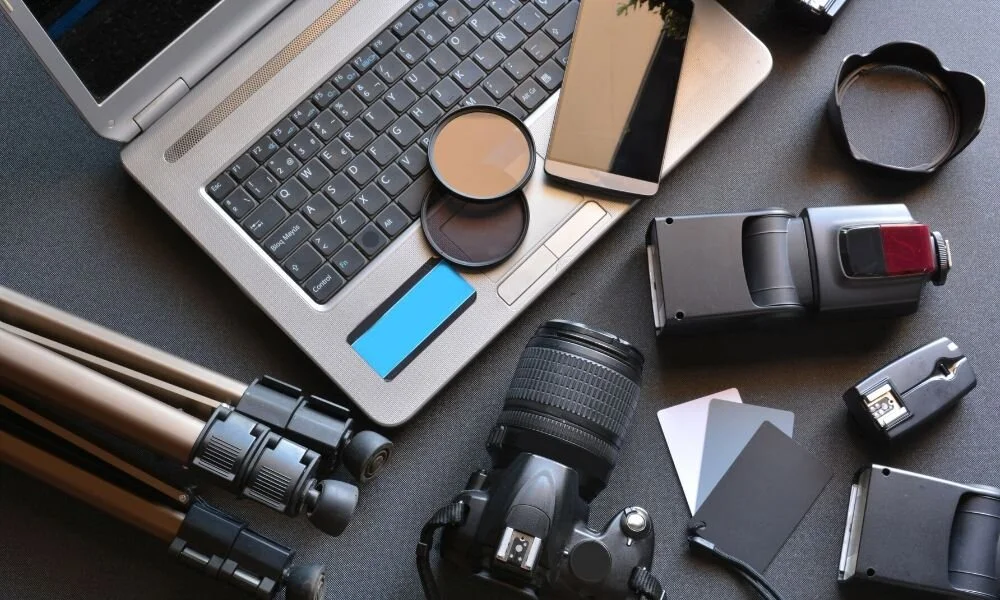How Digital Technology Has Changed Photography
Photography has impacted society in various ways throughout its long lifespan. Its use in both personal and professional settings allows individuals to capture moments of beauty and wonder which they can then share with the world. Photography also enables individuals to capture important moments in their lives and revisit them time and time again. Though the face of photography has changed many times over the years, its impact has never wavered. One technological advancement that has significantly altered the face of photography is the development of digital technology. Below is a brief explanation of how digital technology has changed photography over the years.
Origins of photography
The origins of photography date back much farther than most people recognize as the first iterations would be virtually unrecognizable today. The first cameras were only able to project a very small image onto a surface but were unable to capture the image. People utilized these pinhole images from the 4th century until the 16th century, at which point the technology became more advanced. This second iteration produced a brighter and sharper image and was most frequently used as a drawing aid by artists. These small portable boxes, also known as camera obscura, served as the basis for future camera models.
As technology continues to develop so too did the face of photography and the quality of images produced. Preliminary models of modern cameras were now able to capture images but could only do so under very specific conditions. These cameras required that subjects remain absolutely still, as any movement would cause the image to appear blurry. These cameras could also only produce one image at a time and required lengthy exposure time to produce a proper image. Photos were only available as negatives and were highly susceptible to damage if exposed to excessive light. Because photography was so finicky during this time and required a lot of skill and patience to produce a half-decent image, cameras were mainly only used by professional artists and scientists. It was not until the early 1900s and the development of the daguerreotype that photography became more widespread.
Photography remained virtually unchanged for much of the 20th century, with only slight developments throughout the first half of the century. During the latter half of the 1900s, however, photography began to experience significant advancements once again. Rather than capturing and developing one image at a time, individuals could now capture multiple photos on a single film reel and develop them in a much shorter time frame. The development of color photos also allowed individuals to capture moments in a more realistic and vibrant manner. Developed film reels took the form of physical photo prints and were often accompanied by a negative film reel as well. Though these developments allowed individuals to capture and view images much quicker, the photos produced were still fragile and highly susceptible to damage. The development of digital cameras during the 1990s helped reduce the likelihood of damage without sacrificing the quality of the image.
A shift toward digital photography
With the turn of the century looming in the distance, photography began to shift toward a more digital future. The first digital cameras hit shelves in 1995 and allowed users a way to capture and view photos without film, negatives, or physical prints. Camera phones hit the shelves soon after and offered an even easier way to share images, though the resolution and quality of the photos often left something to be desired. As digital cameras and mobile phones became more advanced they were able to produce higher quality images. Digital photography enables the individual to assess the quality of the image immediately after it’s been taken and allows for easier photo editing as well, ensuring that a perfect picture is produced every time. The images captured with digital cameras could also be easily uploaded and shared across the internet—a feature that many businesses around the world have capitalized on.
Though digital photography does make it easier to capture and share images, it also led to the downfall of physical photographs. Photo prints and negatives have been all but forgotten in favor of a more digital format. Many people find themselves with boxes of old film reels and photo negatives that no longer have a place in modern society. Luckily, alternate forms of digital technology enable individuals to bring these outdated formats into the digital age and preserve them for many years to come.
Photo digitization and storage
Digital photo scanning services have recently become quite popular and allow individuals to preserve their physical photos in a digital format. Photo scanning services are available for photos in almost any format, regardless of how old or outdated they may be. Photo prints, singular slides, and negative film reels can all be scanned and converted into a digital format. Digitizing photo prints removes the risk of damage and aging over the years and helps preserve the memories for future generations. Photos that are scanned and digitized can also undergo a specialized editing process. This process can adjust the photo’s resolution, adjust color and contrast, and crop or reorient the photo to ensure that the photo reflects the original image as closely as possible. Digitizing outdated photos helps ensure that no memories are ever forgotten and that cherished family photos can be passed down to future generations. These digital scanning services are not only limited to personal photographs but are also frequently used in a professional setting. Digitized microfilm, for instance, allows for the digital conversion of microphotographs from newspapers, catalogs, and other important documents. Microfilm is a rather outdated format that requires the use of a microfiche machine to view the original document. Digitizing these files ensures that they are properly filed and remain accessible by everyone for many years to come.
The advancement of digital technologies has also given way to digital storage systems. Physical photos which have been scanned and converted to a digital format can then be placed into a digital storage system for easier viewing and access. These digital storage systems can come in many different forms, the most popular of which is currently cloud storage. Storing digitized photos in this format allows the individual to view and access their photos from any location so long as they have access to an internet connection. Digital storage also allows the individual to share their photos and memories with friends and family across the world simply by sharing a link. Digital storage ensures that no photos are ever damaged, destroyed, or lost.


